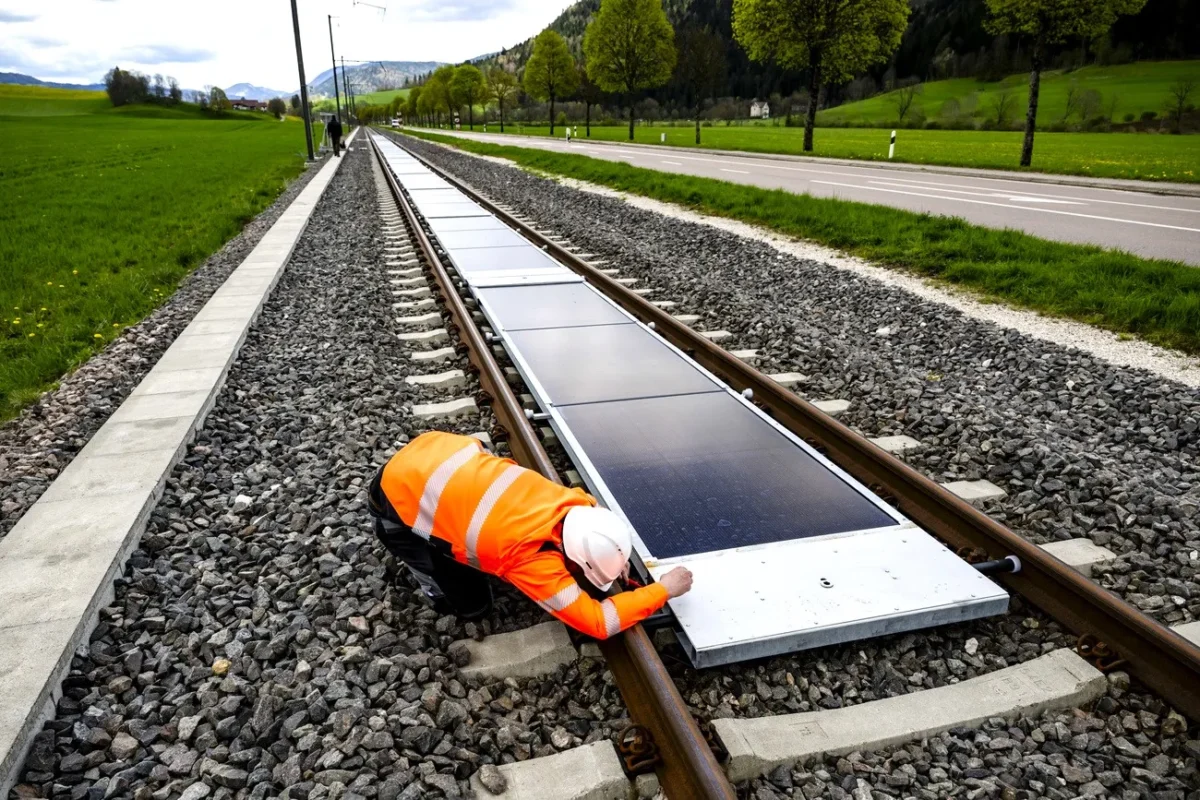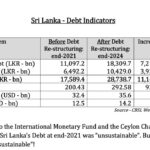This study investigates the feasibility of generating solar power by installing photovoltaic (PV) panels over Sri Lanka’s 1,593 km-long railway track network, inspired by a pioneering Swiss solar rail project. The research utilizes geographic, solar irradiance, and technical efficiency data to estimate the annual power generation potential. The results reveal a potential output of approximately 1,570 GWh annually, equivalent to powering over 1.3 million households. Environmental, economic, and technical considerations are discussed to provide a roadmap for implementation.
1. Introduction Sri Lanka faces rising energy demands alongside global climate change concerns and fossil fuel dependency. The push toward renewable energy is critical for sustainability, energy security, and emissions reduction. Innovations like Switzerland’s solar-over-railway project present an opportunity for land-scarce nations to explore dual-use infrastructure. This study assesses the applicability of such a system in Sri Lanka, considering the full length of its railway network.
2. Literature Review Several countries have explored integrating solar panels with transportation infrastructure. Switzerland’s 2022 project aimed to cover 5% of its railway tracks with solar panels, utilizing the track’s linear expanse and existing rights-of-way. Similar studies in India and the Netherlands have demonstrated the potential of solar rail systems for both traction power and grid supply. In Sri Lanka, solar PV adoption has increased, but land acquisition remains a barrier, making the railway corridor a viable alternative.
3. Methodology This study employs a quantitative approach using secondary data:
- Total railway length: 1,593 km
- Average track width usable for PV installation: 4 meters
- Solar irradiance: 5.0 kWh/m²/day (average across Sri Lanka)
- PV panel efficiency: 18%
- System efficiency (inverters, shading, losses): 75%
3.1 Area Estimation Usable area per km = 1,000 m × 4 m = 4,000 m² Total area for 1,593 km = 1,593 × 4,000 = 6,372,000 m²
3.2 Energy Output Estimation Daily energy per m² = 5.0 × 0.18 × 0.75 = 0.675 kWh Annual energy per m² = 0.675 × 365 = 246.38 kWh Total annual generation = 246.38 × 6,372,000 = 1,570,151,360 kWh or ~1,570 GWh
4. Results The analysis suggests an annual energy yield of approximately 1,570 GWh. This is around 5% of Sri Lanka’s total annual electricity consumption. With an average household consumption of 1,200 kWh/year, this system could power about 1.3 million households annually.
5. Environmental Impact Solar PV systems emit virtually no greenhouse gases during operation. By replacing grid electricity generated from fossil fuels (estimated at 0.8 kg CO₂/kWh), the proposed system could avoid approximately 1.256 million metric tons of CO₂ emissions each year.
6. Economic Considerations Initial investments include PV panels, mounting structures, electrical infrastructure, and safety features. Based on international benchmarks, installation costs could range between USD 800 to 1,200 per kW installed. With an estimated installable capacity of around 1.2 GW, total capital costs could be USD 960 million to 1.44 billion. However, long-term savings from fuel substitution, emission credits, and enhanced energy security may offset these costs.
7. Implementation Challenges
- Safety: Ensuring safe installation and maintenance without disrupting railway operations.
- Durability: Panels must withstand train-induced vibrations and environmental stress.
- Regulatory: Policy frameworks need adaptation to accommodate this infrastructure.
- Financing: Securing funding through public-private partnerships and green finance instruments.
8. Recommendations
- Pilot implementation on a 10 km stretch to study technical and economic viability.
- Integration with Sri Lanka Railways’ electrification plans.
- Establishment of regulatory guidelines for solar rail projects.
- Engagement with international donors and climate funds.
9. Conclusion The integration of solar PV panels over Sri Lanka’s railway tracks represents a promising and scalable renewable energy opportunity. With an estimated 1,570 GWh of annual electricity generation and significant environmental benefits, the concept merits serious consideration. A pilot project followed by phased implementation could position Sri Lanka as a regional leader in transport-based renewable energy solutions.
References
- Swiss Federal Railways (SBB) Renewable Energy Project Reports
- Ceylon Electricity Board (CEB) Statistical Reports
- International Renewable Energy Agency (IRENA)
- Lanka Electricity Company (LECO)
- National Energy Policy of Sri Lanka (2022)
- Relevant peer-reviewed academic articles on solar rail infrastructure















